#fender telecaster 1966
Explore tagged Tumblr posts
Text




Joe Strummer's 1966 Fender Telecaster .
©️ Paul Morigi/Getty Images
#joe strummer#the clash#punk rock warlord#punk aesthetic#70s punk#80s punk#uk punk#punk rock#new wave#post punk#experimental rock#reggae#dub#funk#ska#rockabilly#the only band that matters#photography#fender telecaster 1966#paul morigi#getty images
116 notes
·
View notes
Text
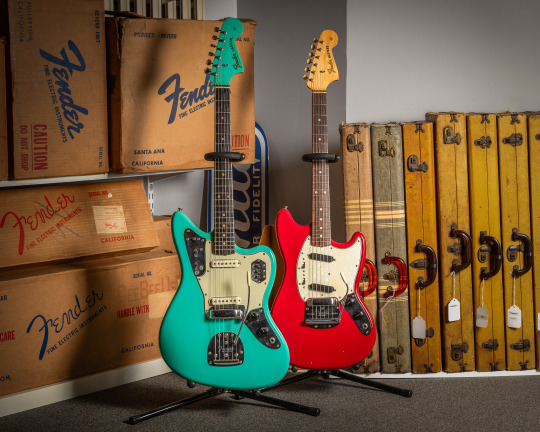
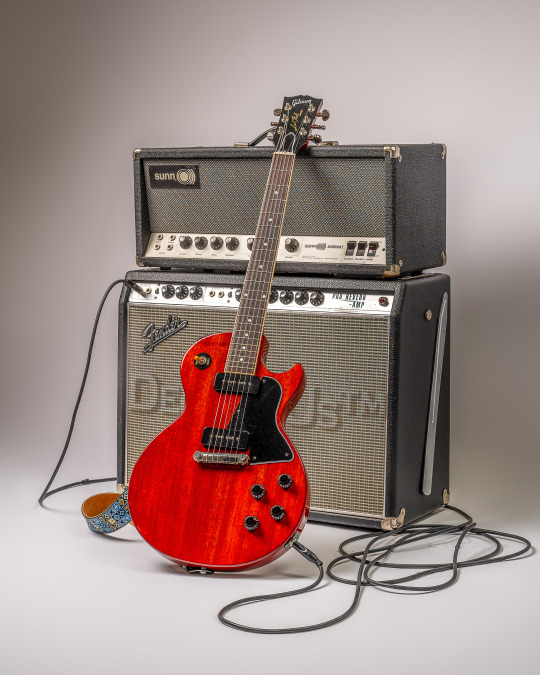



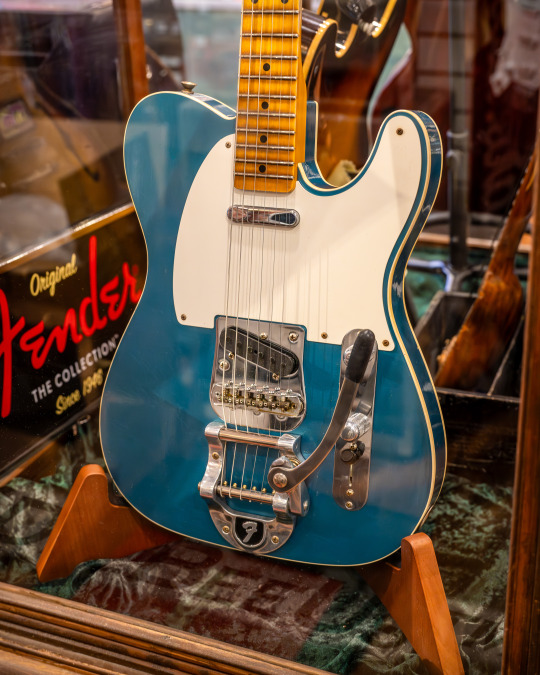
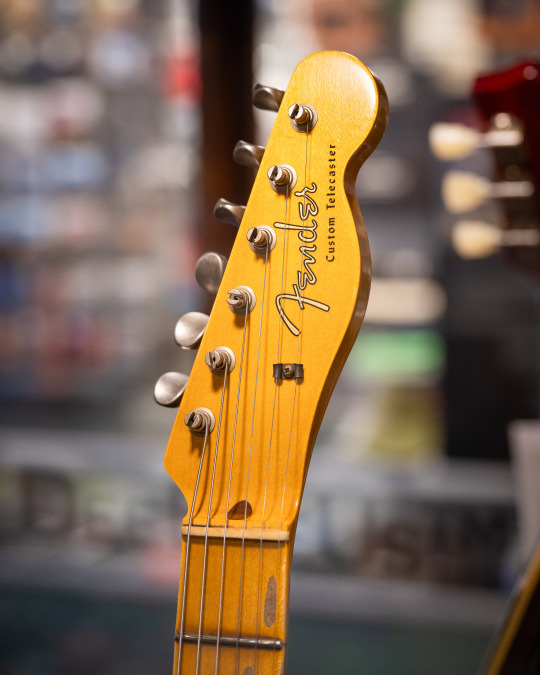

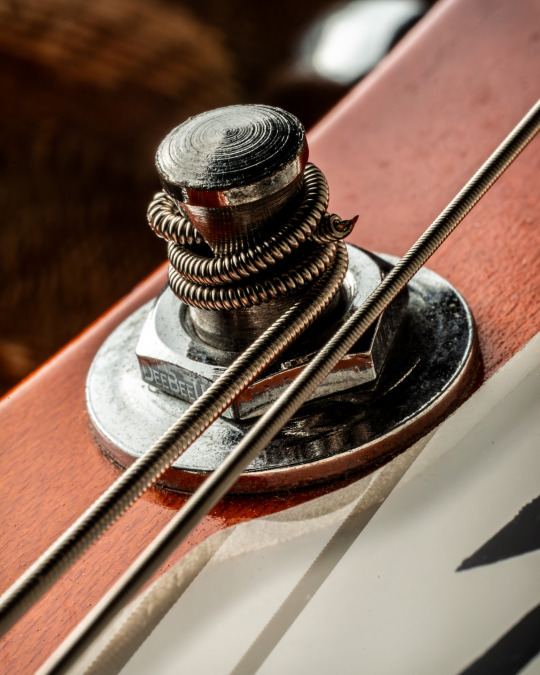
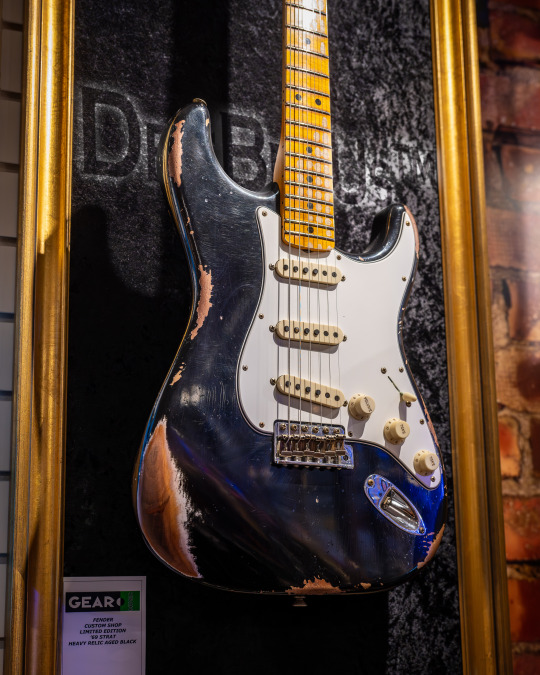
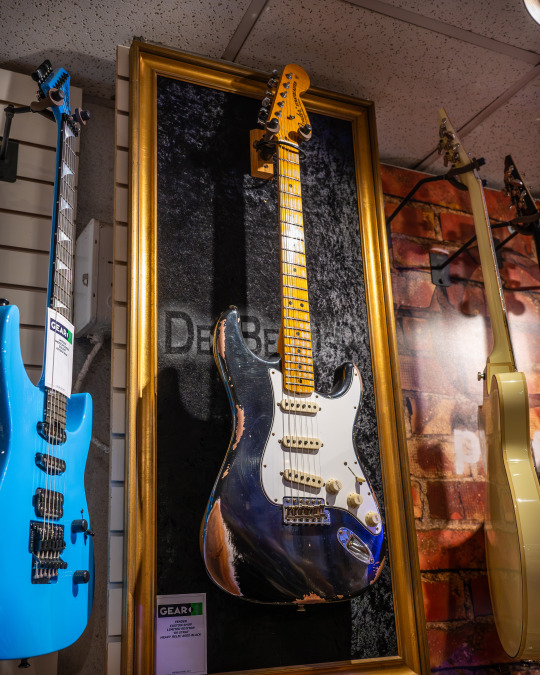
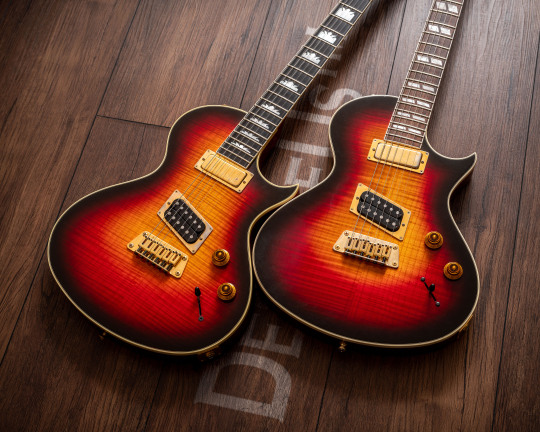
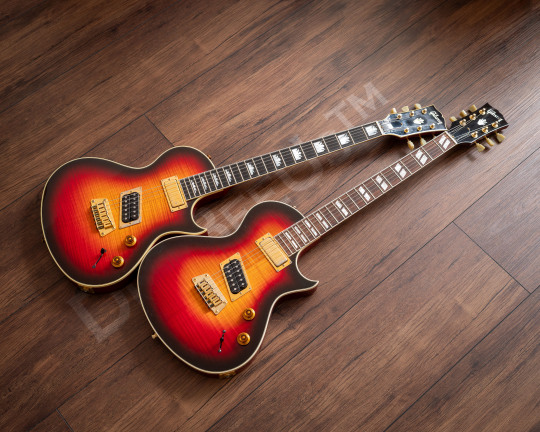

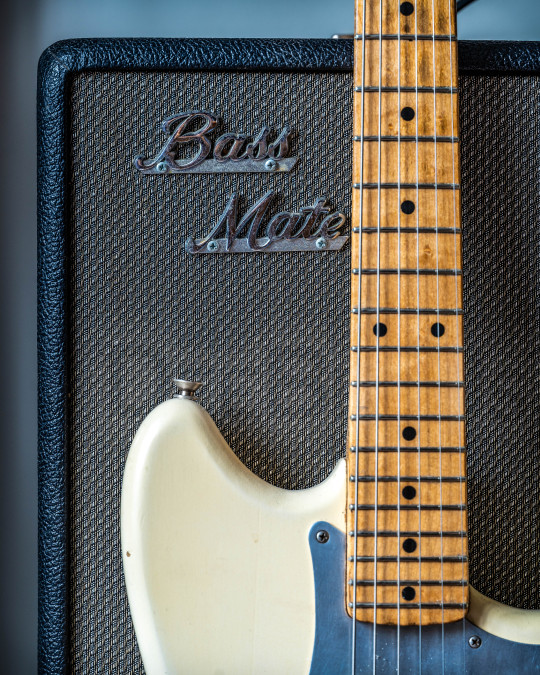
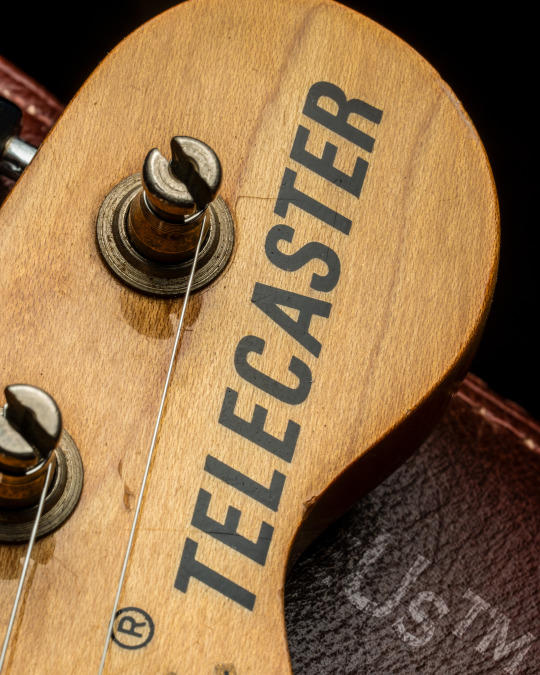
I have been really bad at posting on tumblr lately so here is every guitar pic I have posted to insta since the beginning of 2024
1962 Jag & 1966 Mustang from Fender historian and author Terry Foster's collection
2020 Gibson USA Les Paul Special with 1969 Sunn and 1968 Fender amps. I sold this guitar in the closing days of December...but not to worry I used the money to buy something new and fun! See below...
Chris Bear with 1983 Electro ES-16
Chris Bear with 1968 ES-335
Made a trip to Gear Music in Oakville Canada and saw this lovely Limited Edition Fender Custom Shop Twisted Tele Custom Journeyman Relic in Aged Ocean Turquoise
See #5
See #6
1983 ES-16 Macro
More from Gear Music, Oakville: brand new Fender Custom Shop '69 Strat Heavy Relic
See #9
I'm seein' double here! Four Krustys! Here's what I bought with the money form selling the Cherry Les Paul Special (see #2): 1993 Gibson Nighthawk CS-2 (with the 1998 Nighthawk ST-2, right, that I already owned)
1993 Gibson Nighthawk CS-2, top, with the 1998 Nighthawk ST-2
1993 Gibson Nighthawk CS-2, top, with the 1998 Nighthawk ST-2...note the ebony board and bound headstock on the Custom.
1965 Traynor YBA2 Bass Mate & 1957 Fender Duo Sonic
1969 Fender Telecaster Thinline, macro.
#rickenbacker#electro#es-16#fender#gibson#custom shop#guitar#guitars#vintage guitar#vintage fender#vintage gibson#traynor#amp#amps#vintage amp#guitar collection#guitar photography#gibson es335#es-335#gibson nighthawk#fender duosonic#small guitars#electro es-16#telecaster#thinline#electric guitar#Les Paul#Les Paul Special#relic#reissue
48 notes
·
View notes
Text
youtube
"Season of the Witch" is a song by Scottish singer-songwriter Donovan from his third studio album, Sunshine Superman (1966). The song is credited to Donovan, although sometime collaborator Shawn Phillips has also claimed authorship.
"Season of the Witch" was recorded at the CBS studios in Hollywood, California, where most of Sunshine Superman was recorded. According to Donovan, he and Phillips wanted a "rock-combo sound" for the song and chose some local musicians from the local clubs. They included Lenny Matlin on keyboards, Don Brown on lead electric guitar, Bobby Ray on bass and "Fast" Eddie Hoh on drums. Donovan played the second guitar part, as he explained in his autobiography:
I played a white Fender Telecaster Electric Guitar on "Witch," chunking down on the chord pattern, wailing a chilling chorus. A major seventh with an open G, to D 9th with a G-flat bass (Bert Jansch chord). The riff is pure feel.
In a retrospective song review for AllMusic, Lindsay Planer commented: "Few songs so perfectly reflect the dawn of the psychedelic pop era as aptly as Donovan's 'Season of the Witch' ... Both lyrically as well as musically, the languid and trippy contents project a dark foreboding atmosphere [and] a sort of sinister tale of paranoia and the paranormal". John Bush called the song "easily [one of the two] the highlights of the album ... a chugging eve-of-destruction tale"
#Dark Shadows#Johnny Depp#witches#Tim Burton#Eva Green#gothic#Barnabas Collins#vampire#Michelle Pfeiffer#Bella Heathcote#Chloe Grace Moretz
45 notes
·
View notes
Text
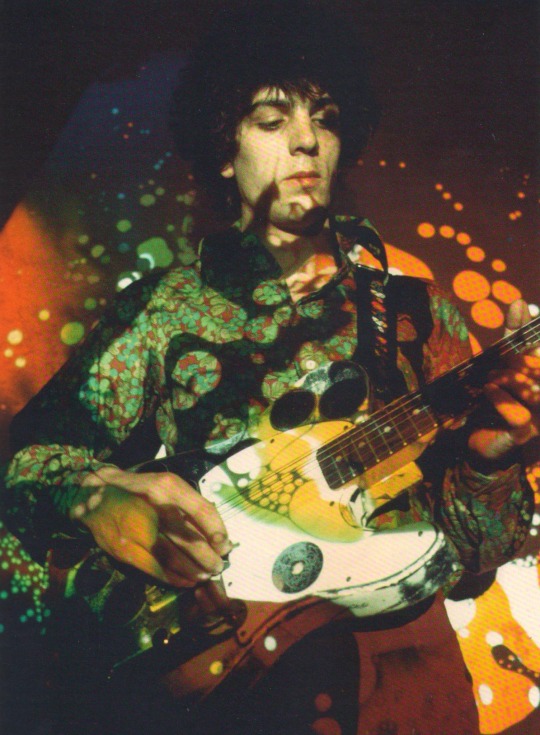
Syd Barrett’s “Mirror Disc” Telecaster guitar is the instrument with which he is most widely associated, even though it isn't actually a Telecaster at all; it is in fact a Fender Esquire '62. Barrett purchased the guitar in early 1965 and towards the end of 1966 customized it by sticking 15 polished metal discs on the front of the body, which reflected the blaze of Pink Floyd's early light-shows to great effect.
Syd Barrett used the guitar on all of his recorded work with Pink Floyd, but subsequently swapped it for a white 1964 Fender Telecaster. He later regretted doing this, stating that the Esquire had always been his favourite instrument. Unfortunately, the whereabouts of the original is unknown and a reproduction had to be made for the Pink Floyd exhibition, Their Mortal Remains.
Syd Barrett performs with the Telecaster in Hampstead, June 1967 | Photo by Andrew Whittuck
credit | Glenn Povey
129 notes
·
View notes
Link
3 notes
·
View notes
Text

Remembering the the Ice Man - Albert Collins (October 1, 1932 – November 24, 1993)
Growing up in Texas, Collins dabbled in jazz piano before his cousin Willie Young showed him some guitar licks, and his blues education began. Taking his cue from John Lee Hooker, Guitar Slim, T-Bone Walker and BB King, Collins found a real talent for the form.
He’d started out on an Epiphone but, on seeing Clarence Gatemouth Brown wailing on a Fender Esquire, promptly switched brands, discovered the Tele and, ultimately, his go-to instrument – a Fender 1966 Custom Telecaster, with ash body, maple fretboard, ashtray bridge, Gibson humbucker at the neck.
His lines were emotional and tasteful, packed with incredible bends, often wild vibrato, slurs and slides and speedy hammered-on/pulled-off licks. Collins’ right hand was key to his unmistakeable phrasing and tone. He eschewed the precision of a pick and played his Tele with his fingers, his thumb and forefinger doing most of the work.
One trademark was his juicy ‘double octave’ move. Say he was capo’d for D: he’d pop the low E string with his thumb for the tonic note and immediately follow that with the D two octaves up – 14th fret of his second string – played with his forefinger. Then he’d shake that sucker for every ounce of feel it had in it.
His preference for pick-hand upstrokes meant the flesh of his fingers tempered the twang of his Tele, usually amped to eye-watering volume by his 100-watt Fender Quad Reverb (bass dialled to zero, everything else cranked).
Sometimes the cable connecting Tele to amp ran to 100 feet long – the story goes he could leave the venue mid-show, go next door to order pizza, and come back without even missing a note. Cool? They didn’t call him The Iceman for nothing...
By Grant Moon
( Total Guitar )
6 notes
·
View notes
Link
0 notes
Text
ジョー・ストラマーの数量限定シグネイチャーモデル
Fender Custom Shopがジョー・ストラマーの数量限定シグネイチャーモデル【Limited Edition Joe Strummer Masterbuilt Telecaster®】を発表!!
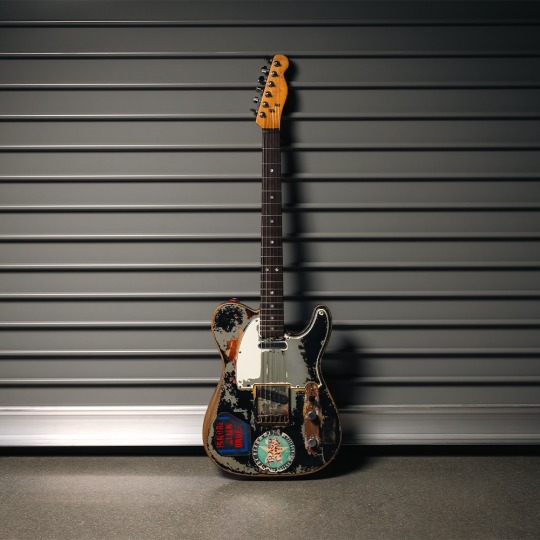
フェンダーは、最高峰のギター/ベースを生み出すFender Custom Shopより、ジョー・ストラマーのシグネイチャーモデル『Limited Edition Joe Strummer Masterbuilt Telecaster®(3,300,000円/税込)』とアクセサリー製品を数量限定で発売することを発表した。
またギターに合わせてシグネイチャーのアクセサリー製品も登場。 ギターは、フェンダー旗艦店Fender Flagship TokyoおよびFENDER SHOP in MIKIGAKKI AMERICAMURA(三木楽器 アメリカ村店)にて、アクセサリー製品は全国のFender正規取扱店でも販売される。
The ClashとThe Mescalerosのフロントマンとして名を馳せたジョー・ストラマーは、今では名高い1966年製テレキャス��ーを傍らに、ステージ上の生々しく情熱的な存在感と強烈な政治的メッセージを内包したソングライティングを通して、70年代後期に始まったパンクロックムーブメントの台頭に大きな影響を与えた。 彼のレガシーを称え、Fender Custom Shopのシニアマスタービルダーであるポール・ウォーラーの手によって、ジョーが愛用した楽器を細部に至るまで忠実に再現したモデルが生み出された。
ポール・ウォーラーは本モデルについて「私はジョーの音楽を聴いて育ちましたが、Fenderのようなブランドで働き、このような楽器に触れることができたのは、運命の巡り合わせだと感じています。このようなギターを製作することは、やりがいがあると同時に難しいものです。私はより正確に、そして多くの人々にとって意味のある大切な製品を作り出そうとしていますし、だからこそCustom Shopでは、最適なビルダーがそのアーティストのモデルを制作することを大事にしています」とコメントしている。
『Limited Edition Joe Strummer Masterbuilt Telecaster®』は、厳選されたレゾナンス豊かな2ピースアルダーボディに、7.25インチラジアスのラウンドラミネートローズウッド指板を採用したMid ʻ60s “C”シェイプネックが組み合わされており、激動のパンクロックの歴史の重みに加え、多くのギターファンを魅了し続けてきた60年代のFenderギターの人気の仕様を備えている。
また、3トーンサンバーストラッカーの上にブラック塗装を重ね、マッチングペイントピックガードと共にSuper Heavy Relic®によるエイジド加工が施されている。
そして、長年のツアーにおけるヘビーユースを物語るオリジナル機の全ての使用痕が、細部に至るまで完全に再現されています。ピックアップの名職人であるホセフィーナ・カンポスによってハンドワウンドされたʻ67 Telecasterピックアップからは、The ClashやThe Mescalerosのアルバムを彩ってきた激情のトーンが得られる。
その他、21本 のJescar Vintage (45085)フレット、Modern Tele®ワイヤリング、3ウェイピックアップセレクター、6スチールバレルサドル式ストリングスルーボディTele®ブリッジ、Schaller® M6 Miniチューニングマシン、ブラスナット、トールスペーサー付���ウィングストリングツリーといったプレミアムな仕様を備えている。
オリジナルツアーケースのレプリカ、限定生産のオリジナルシグネイチャーストラップ、正規製品保証書が付属する。

<Limited Edition Joe Strummer Masterbuilt Telecaster® 特徴> 厳選された2ピースアルダーオフセットボディ 7.25インチラジアス60年代オーヴァル“C”シェイプのプレーングレインメイプルネック 3Aローズウッド指板 21本のJescar Vintageフレット 6スチールバレルサドル式ストリングスルーボディテレキャスター® ブリッジ Custom Shop Hand-Wound ʻ67 シングルコイルテレキャスター®ピックアップ
<アクセサリー>
■ Joe Strummer Strap (市場想定売価:4,400円 税込・6月5日発売) ジョー・ストラマーの伝説的なテレキャスターとマッチするようにデザインされたこのストラップは、ヒョウ柄のアニマルファーとレザーバッジが採用されている。
■ Joe Strummer 13’ Instrument Cable, Pink Leopard (市場想定売価:3,850円 税込・発売日は後日公式サイトにて) ジョー・ストラマーの比類なきスタイルと生き様を讃えるシグネイチャーケーブル。 長さ13フィート(約396cm)、ピンクのPVCジャケットにヒョウ柄のハウジング、そしてケーブルシュリンクには ジョーのサインが入っている。
■ Joe Strummer Strat/Tele Case (市場想定売価:33,000円 税込・発売日は後日公式サイトにて) 大胆なピンクのトーレックス外装の3層構造ハードシェルウッドケース。 ビニール巻きのスチール製キャリーハンドルとドローラッチ、ケース全体に施されたトリプ ルメッキのシルバーハードウェアが特徴。印象的なヒョウ柄の内装には、ソフトなクラッシュアクリルのプラッシュライニングが採用されている。 小物の収納に便利なコンパートメントスペースも付属。
■ Joe Strummer Signature Telecaster® Pickup Set (市場想定売価:20,350円 税込・発売日は後日公式サイトにて) ジョー・ストラマーの楽曲を象徴するクラシックなテレキャスタートゥワングと粘りを再現。このピックアップセットは、アルニコ5マグネットとポリソールワイヤーが優れた明瞭度とダイナミクスをもたらす一方で、よく演奏されたヴィンテージ楽器のルックスを再現する。
【ギター 製品概要】 Limited Edition Joe Strummer Masterbuilt Telecaster® 市場想定売価:3,300,000円(税込) 販売開始日:2024年5月15日(水) 取扱店:Fender Flagship Tokyo / FENDER SHOP in MIKIGAKKI AMERICAMURA
※製品仕様及び販売価格は、予告なく変更となる場合がございます。
【アクセサリー製品概要】 製品名 市場想定売価 ・Joe Strummer Strap(4,400円 税込) ・Joe Strummer 13’ Instrument Cable, Pink Leopard(3,850円 税込) ・Joe Strummer Strat/Tele Case(33,000円 税込) ・Joe Strummer Signature Telecaster® Pickup Set(20,350円 税込)
販売開始日 Joe Strummer Strap:2024年6月5日(水)
※Joe Strummer 13’ Instrument Cable, Pink Leopard、Joe Strummer Strat/Tele Case、Joe Strummer Signature Telecaster® Pickup Setの国内発売日は未定。後日公式サイトにて公表される。
取扱店:Fender Flagship Tokyo / FENDER SHOP in MIKIGAKKI AMERICAMURA / Fender 公式オンラインショップ
※製品仕様及び販売価格は、予告なく変更となる場合がございます。
back to HOMEback to MOBSPROOFback to MOBSPROOF web magazine
0 notes
Text

Bob Dylan on a Fender Telecaster during a show at the Westchester County Center in White Plains NY, 1966.
Photo by Alice Ochs.
“She wears an Egyptian ring
That sparkles before she speaks
She wears an Egyptian ring
That sparkles before she speaks
She’s a hypnotist collector
You are a walking antique”
- Bob Dylan
3 notes
·
View notes
Text
Discover Jimmy Page
A complete list of his most famous electric guitars - pt. 1
from pageysartgallery
1959 Fender ‘Dragon’ Telecaster - restored in 2007
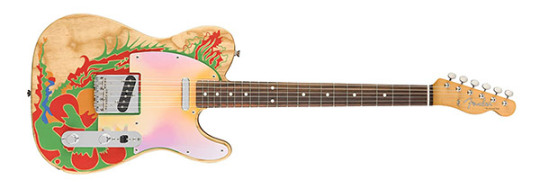
Finish: Custom yellow with dragon painting, it was originally white
Years used: 1966 to early 1970s, only the body is left of it
When Jeff Beck was recommended by Page to join the Yardbirds in 1965, Beck gave him this 1959 Fender Telecaster, which originally had a white finish. In 1967, Page decided to add eight circular mirrors to the body, completely changing the instrument’s visual identity. Eventually, he removed the mirrors and completely repainted the guitar in a yellow-ish color, and added the now-famous dragon painting.
This was the main Zeppelin guitar, live and in the studio from from 1968 to April 1969. It was also used on the solo for “Stairway To Heaven” in the studio.
Unfortunately, when Page got back from Zeppelin’s American tour, he found out that one of his friends had repainted it. Although intended as an act of kindness, his friend practically ruined the guitar and its wiring. Page disassembled the poor instrument and used some of its parts on other guitars. The body is reportedly still in his possession, but he refuses to share pictures of it with the public.
“The whole idea was to put an extra life into the guitar. The whole of the Dragon artwork it starts off – I don’t do a sort of a pre-run of it. I wanted to use sort of poster paint which was used in the production of those psychedelic posters.”
— Jimmy Page (x)
1961 Danelectro Shorthorn - a bit of a mongrel, made from the best bits of two Dano's

Finish: Black with a white pickguard
Years used: Mid-1960s to now
Danelectro guitars used to have major success back in the 1960s. Formed in 1947, the company operated independently until 1966 when it was sold to the Music Corporation of America. Unfortunately, the brand went under in 1969, only to be resurrected in the late 1990s.
In his vast arsenal of guitars, Jimmy Page still has his old Danelectro Shorthorn model, also known under designated names 3021 and 59DC. This particular instrument, featuring two “lipstick” single-coil pickups, was manufactured back in 1961 and Page bought it in the mid-1960s. The story goes that he first used it on stage with the Yardbirds. Occasionally, the guitar found its use with Led Zeppelin. The guitar is often associated with “Kashmir” as it was used for the song many times during Led Zeppelin’s shows.
It is a very simple instrument with a hardtail bridge, a 3-way switch for its two pickups, master volume control, master tone control, and a pretty-looking white pickguard covering most of the treble side of the body. And, what many guitar lovers don’t know, Danelectro Shorthorn actually features a semi-hollow body.
1959 Gibson Les Paul Standard - The ‘Number One’. The most iconic and still Jimmy’s favourite and most used Zep guitar. Noticeable lack of flame finish.

Finish: Sunburst
Years used: 1969 to now
This is a Gibson Les Paul Standard model built back in 1959 or early 1960. These instruments are popularly known as “Holy Grail” guitars and can reach some mind-boggling prices among avid collectors. This particular one found its way into Jimmy’s collection in 1969 when Joe Walsh, who later became a member of the Eagles, gave it to him as a gift. As Walsh explained many years later, he just thought that Jimmy needed a nice Les Paul in his collection, since it fits Zeppelin’s music.
The instrument saw some modifications before it came into Page’s possession. One of the main changes was the neck, which was sanded, thus making it significantly thinner. Jimmy did some of his own changes by adding gold-plated Grover tuning machines, as well as changing its pickups multiple times. The pickup that saw the most action on it in the 1970s was T-Top humbucker. This one was eventually swapped in the 1990s for a modified Seymour Duncan, and Page even added a “push-pull” potentiometer to it for the reverse phase mode of operation. The guitar still remains his “Number One” to this day.
“As soon as I played the Les Paul I fell in love. Not that the Tele isn’t user friendly, but the Les Paul was gorgeous and easy to play. It just seemed like a good touring guitar. It’s more of a fight with the Telecaster but there are rewards.”
— Jimmy Page
Custom-Made Gibson EDS-1275

Finish: Cherry red
Years used: Most of the 1970s, it’s most likely still in his possession
When you think of Led Zeppelin and the 1970s, it’s almost impossible not to picture Jimmy Page with his legendary double-neck guitar. This is mostly due to the fact that he used it for “Stairway to Heaven” during live shows.
Gibson’s EDS-1275 is one of the most innovative guitar models. Entering production in 1963, it is believed that this was the first-ever double-neck solid-body electric guitar. Featuring one conventional 6-string neck and another 12-string neck, all with a double set of pickups, it allowed guitar players to create more tones with a single instrument.
Page asked Gibson to make him one in 1971, although EDS-1275 was not in production anymore at that point. Nonetheless, they agreed and made a special one for him, which featured a modified body shape compared to the original commercially available model. It’s not completely certain, but it’s quite possible that Jimmy Page popularized the instrument so much that Gibson eventually started making them again throughout the 1970s and later decades.
“We recorded Stairway to Heaven, and there was like a guitar army on it – as they used to tease me. Because of that, it needed more texture than just one guitar. The double-neck seemed like a perfect compromise.”
— Jimmy Page (x)
1960 Gibson Les Paul Custom ‘Black Beauty’ - Jimmy's main session guitar, used at Royal Albert Hall in 1970 and a few other early gigs. Stolen in 1970, recovered 2018.
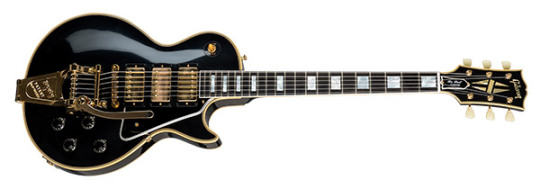
Finish: Black with golden hardware
Years used: Early 1960s to 1970
Things really took a different turn when Jimmy Page switched over to Les Paul guitars full-time, which eventually became his go-to guitar model. However, he actually got his hands on one way before Led Zeppelin’s formation, sometime in the early 1960s. Nicknamed “Black Beauty,” this was a black Gibson Les Paul Custom, most likely manufactured back in 1960. Some sources claim that he traded his Gretsch Chet Atkins signature model for it.
Jimmy used “Black Beauty” as the main guitar for his session work. Of course, the instrument found its way on early Led Zeppelin records. Being a Les Paul Custom model, it featured some significantly improved aesthetic traits. This includes 3-ply binding, golden hardware, black pickguard, the easily-recognizable pearl logo on the headstock, and pearl inlays on the fretboard. Additionally, the guitar came with a Bigsby tremolo bridge and tailpiece, as well as three humbuckers.
Jimmy Page was scared to take it on the road with him. And when he finally did go overseas to the United States, his precious “Black Beauty” got stolen. Its whereabouts were a mystery for decades until the instrument was finally retrieved in 2015. It still remains one of the most iconic guitars in history.
“Black Beauty, which got nicked in the States; it disappeared in an airport, somewhere between Boston and Montreal. A lot of my studio work had been done with that guitar. I didn’t want to take it out of the house. Funny that once I did take it out, it got nicked!”
— Jimmy Page, Guitar World, 1991
1959 Gibson Les Paul Standard - ‘Number Two’ bought as a backup in 1973, slightly darker sunburst than the #1. It's a bit meatier and louder than the #1 according to Jimmy's guitar tech.
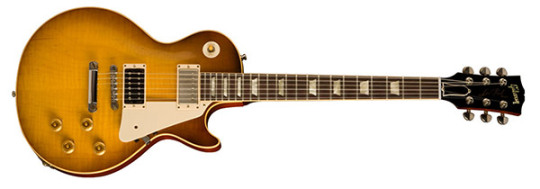
Finish: Sunburst
Years used: 1973 to now
Jimmy fell so much in love with his Gibson Les Paul Standard that he got ahold of another “Holy Grail” in the early 1970s as a backup option, popularly known as the “Number Two.” In order to make it feel and sound exactly the same as the “Number One,” he did some significant modifications to it, including the neck sanding and the addition of Grover tuning machines. But although it looks pretty similar to the “Number One,” this Les Paul Standard has a slightly darker shade, making it look browner.
Compared to the main Les Paul, this one had more modifications done to its electronics. All four of its potentiometers were swapped for “push-pull” ones and there are even some additional switches. As a result, Jimmy was able not only to do phase reverse but also coil-splitting and coil-tapping, allowing for an abundance of sonic options.
“I customized my number two Les Paul, which again is a real old vintage one. However, that gave any combination of all of these (pickups). But, it was a little fussy, because all of the knobs were push/pull, and I had little switches (below the pickguard).
Reality of it was – the thing that I found most important to me was the fact that you could reverse the phase on this. By reversing the phase you get a close approximation to the sound Peter Green would get.”
— Jimmy Page (x)
1969 Les Paul Deluxe - ‘Number Three’, metallic purple red, as seen on “Whole Lotta Love” on TSRTS

Finish: Red
Years used: From 1970 or 1969
Page’s love for Les Paul guitars has always been immense. So it’s no wonder that he also had his “Number Three,” which is a Gibson Les Paul Deluxe model. However, not much is known about the instrument, and some believe that this was a Les Paul Standard. But what makes it interesting is, that besides being traditionally a “third” one, he actually got the guitar before the second Les Paul Standard.
The “Number Three” was used sporadically throughout the 1970s, mostly between ’73 and ’75. Towards the mid-80s, Jimmy installed a B-Bender in it and started using the guitar again more extensively. Most recently, he used it on “Over Now” from the 1993 release Coverdale / Page.
“Probably my favorite effect was the one used on “Over Now.” After David sings, “I release the dogs of war,” you hear this growl. I produced that by running my purple B-Bender Les Paul through an early-sixties Vox wah, a DigiTech Whammy Pedal set “deep,” an old Octavia, and one of my old one-hundred-watt Marshall Super Leads, which I used with Zeppelin.”
— Jimmy Page, ‘Light and Shade: Conversations with Jimmy Page’
1964 Fender Stratocaster - Used at Earls Court in 1975 for one night only on “No Quarter” plus on “For Your Life” from Presence and on ITTOD. Also used at Knebworth in 1979 and '80 tour on “In The Evening”
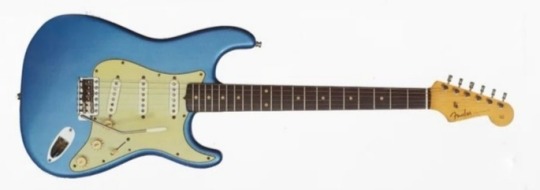
Finish: Lake placid blue
Years used: Second half of the 1970s and 1980s
A 1964 Fender Stratocaster model, painted in a very aesthetically pleasing shade of blue (referred to as “lake placid blue”) and featuring a classic white electronics cover. While most of the features on this model are what you’d expect from a Fender Strat, these 1960s models featured rosewood fretboards instead of “conventional” maple ones.
The story goes that Page bought it back in 1975 and that it was used on Zeppelin’s “Presence” album for a few songs, although this has not been confirmed. Page claimed that the instrument was used since 1978, and there’s also a theory that he implemented it on the 1979 album “In Through the Out Door.”
1950s Futurama/Grazioso
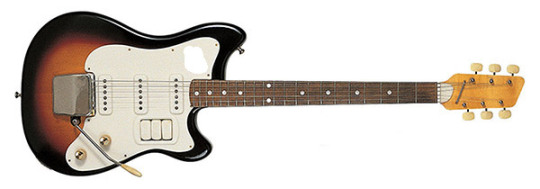
Finish: Sunburst
Years used: Late 1950s to the mid-1960s
These guitars were made in Czechoslovakia by a company called Drevokov. Originally called Grazioso for their domestic market, they had their name changed to Futurama for foreign markets. These came with three single-coil pickups, tremolo bridge (a type that you don’t see on any other known guitars), sunburst finish, and a body that somewhat resembles Fender’s Jazzmaster. It featured many other unconventional traits, including individual on-off pickup switches that eerily resemble old light switches.
Page used this one at the very beginning of his guitar-playing career. It’s not exactly certain when it stopped being a part of his inventory, nor where it’s currently at, but it’s assumed that this Futurama saw some action during Page’s time as a session guitar player in the first half of the 1960s.
“See, that’s the first electric guitar I get. The one before it, the Höfner, my dad buys that, but after that, [he laughs]—I don’t know, maybe he was psychic and he knew what was coming, because there’s a whole procession of guitars that come into my life over the next few years. But that’s the first one, the Grazioso. It looked and felt like an electric guitar, even though it wasn’t a Fender.”
— Jimmy Page (x)
1965 Fender Electric XII
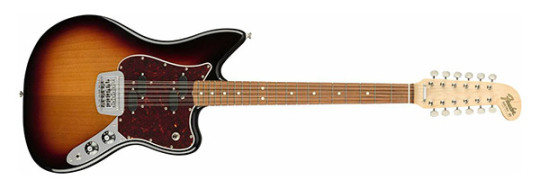
Finish: Sunburst
Years used: Early 1970s and it’s most likely still in his possession
Before the Gibson EDS-1275, Jimmy had another 12-string guitar, Fender’s old Electric XII. This particular instrument was manufactured sometime in 1965. It was used in the studio, most popularly for the recording of “Stairway to Heaven.” However, producer Andy John who worked with Zeppelin on their legendary fourth record claims that it was actually a Rickenbacker 12-string that was included in the song. It’s still one of the main mysteries, even to this point.
Fender’s Electric XII is easily recognizable for its weird “hockey stick” headstock. It also has two split-coil pickups, which is another very unconventional trait for electric guitars as you mostly see these kinds of pickups on basses.
“I used a Fender 12-string in the studio. And before the Fender, I used a Vox 12-string. You can hear the Vox on things like “Thank You”, and “Living Loving Maid”. On “Stairway” I used both my Vox Phantom that I used on “Thank You” and my Fender Electric XII. They both sort’ve sounded the same. It was more about how they played. They felt different. On “The Song Remains The Same”, it’s just the Fender.”
— Jimmy Page (x)
sources: (x) (x) (x) (x)
Featured in the next part: the 1953 brown Fender Telecaster, the 1967 Vox Phantom XII, the 2nd no3 Gibson Les Paul Standard, the Gibson Les Paul TransPerformance, the Gretsch Country Gentleman and the Fender Telecaster with its regular white finish and circular mirrors glued to the body
#jimmy page#pageysartgallery#led zeppelin#the firm#the yardbirds#robert plant#john bonham#john paul jones#paul rodgers#60s#70s#80s#classic rock#classic rock fandom#rock n roll#hard rock#blues rock#rock music#jeff beck#discover jp#guitars#guitar#guitarist#gibson#fender#telecaster#stratocaster#danelectro#by dee dee 🌺🕯️
70 notes
·
View notes
Text
Taylor’s Equipment
Guitars
Bilt Corvaire
BilT Relevator LS
BilT Volare
BilT Zaftig
Danelectro 59 DC Electric Guitar
Eko 500 V2
Epiphone Casino
'89 Epiphone Sheraton (with Arcane Ultratron pickups)
Fender '75 Starcaster
Fender Blacktop Jaguar HH Electric Guitar
Fender Jazzmasters
Custom Fender Jazzmasters with humbuckers
Fender Classic Series '72 Telecaster Thinline
Fender Telecaster
Fender Coronado II Wildwood III
Gibson 20th Anniversary 1957 Les Paul Custom Black Beauty
Gibson ES-390
Gibson Les Paul Goldtop Electric Guitar
Gibson Les Paul Junior Double Cut VOS
Gibson Les Paul Junior Special Exclusive
Gibson Midtown Custom (with Bareknuckle Mississippi Queen P90 pickups)
Gibson SG '61 Reissue
Gibson Songwriter Deluxe Studio EC Acoustic Guitar
Godin 5th Avenue Kingpin
Gretsch G6119-1962HT Tennessee Rose HT
Hagström Impala
1966 Hagström Viking Electric Guitar
Kay Apollo II/Titan 1960's
Les Paul Special
'58 Les Paul Jr
Martin 000-18 Golden Era
Martin Steel-String Backpacker Acoustic Guitar
Neptune Singlecut Baritone
Rickenbacker 360
Supro Coronado II
Taylor 414ce
Other Guitars
Jerry Jones Baby Sitar
Kala Archtop KA-JTE Tenor Ukulele
Bass
Fender Jaguar Baritone Custom
Squier Jaguar Bass
Squier Jaguar Vintage Modified Short Scale Bass
Fender Precision Bass
Amps
1960 Watkins Dominator
65 Amps Tupelo
Divided By 13 RSA 23
Marshall JCM 2000 DSL 100 Dual Super Lead 2-Channel 100-Watt Guitar Amp Head
Roland JC 120
Silverface Fender Deluxe Reverb
Supro Statesman 50W Head
Supro 1695T Black Magick
Traynor YBA-1A MKII
Vox AC30
Pedals
Alexander SpaceXpander
Boss CE-1 Chorus Ensemble
Boss CE-2W Chorus
Boss DC-2 Dimension C
Boss DD-20 Giga Delay Digital Delay Pedal
Boss RV-3 Digital Reverb/Delay
DigiTech Whammy (4th Gen)
DigiTech X-Series DigiVerb
EarthQuaker Devices Dirt Transmitter Fuzz Pedal
EarthQuaker Devices Ghost Echo Reverb
EarthQuaker Devices Grand Orbiter V2
EarthQuaker Devices Hoof
EarthQuaker Devices Rainbow Machine Polyphonic Pitch Mesmerizer
EarthQuaker Devices Pitch Bay
EarthQuaker Devices Terminal Fuzz
EarthQuaker Devices Tone Job EQ
EarthQuaker Devices Transmisser
Electro-Harmonix POG2 Polyphonic Octave Generator Guitar Effects Pedal
Empress Echosystem
Empress Effects Multidrive Overdrive Guitar Effects Pedal
Empress Effects Reverb
Eventide H9 Max Harmonizer Multi-Effects Pedal
Heavy Electronics Radio Havana
JHS Pedals Mini Foot Fuzz Silicon Fuzz Pedal
Mantic Effects Proverb Reverb
Maxon AD-999 Pro Analog Delay
Mr.Black Supermoon
MXR M101 Phase 90
Old Blood Noise Endeavors Procession
Old Blood Noise Endeavors Reflector Chorus
Pearl CE22 Chorus Ensemble
Pigtronix Mothership Analog Synthesizer
Rawkworks Light Overdrive
Red Panda Context
Strymon blueSky Reverberator Pedal
Strymon Ola dBucket Chorus & Vibrato
Strymon TimeLine Delay Pedal
TC Electronic Ditto Looper Guitar Effects Pedal
TC Electronic Polytune 2 Pedal Tuner
Visual Sound Garagetone Chainsaw Distortion
Z.Vex Vexter Series Fuzz Factory
ZVex Vexter Series VSD Super Duper 2-in-1 Boost Pedal
Power Supplies
CIOKS DC10 Power Supply
Picks
Clayton Custom Orange Delrin 0.60mm
Straps
Ernie Ball Polypro Guitar Strap
LETGOdwork Anchor Guitar Strap
LETGOdwork X-Bird Guitar Strap
Percussion/Drum Sets
Truth Custom Turquoise Glass Vintage Drum Kit
Roland SPD-SX Sampling Pad
Yamaha 2.5 Octave Concert Band Bells
Drumsticks
Vic Firth X55A Drumsticks
Vic Firth X5A Drumsticks
Vic Firth 3A Drumsticks
MIDI Controllers
RJM Mastermind GT/22 MIDI Foot Controller
In-Ear Monitors
Ultimate Ears Ue 7 Pro In-Ear Monitors
Phew okay this took a while! to be continued:)
#taylor york#taylor benjamin york#paramore#fender#gibson#les paul#bilt#hagström#vic firth#earthquaker#equipment#tayloryorkie
28 notes
·
View notes
Text
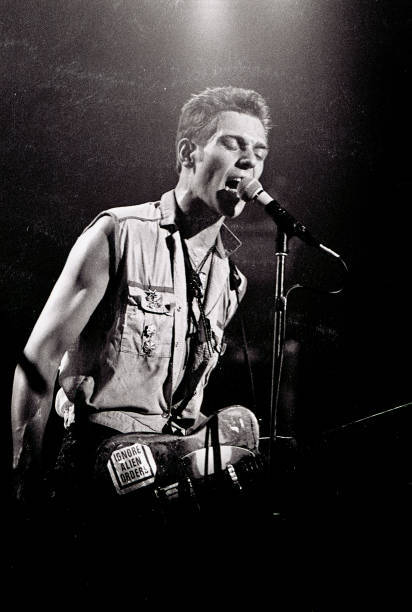
Paul Simonon performing live at the Brixton Fair Deal , London , UK , 07/30/82 .
©️ Steve Rapport/Getty Images .
#paul simonon#the clash#bassist#bass player#punk boy#punk aesthetic#70s punk#80s punk#uk punk#punk rock#new wave#post punk#experimental rock#reggae#dub#funk#ska#rockabilly#fender telecaster 1966#the only band that matters#black and white photography#steve rapport#brixton fair deal#london#uk#1982
32 notes
·
View notes
Text


1968 #Fender#Telecaster with 1959 #FenderPrinceton. '68 was a terrible year for the world...but still a decent one for guitars!
If I am not mistaken, 1968 was the last year Fender used nitrocellulose lacquer on their guitars, and also the last year they used cloth-insulated wiring. This shift from "traditional" to "cost-effective, and durable" materials means that '68, for me, is kind of the symbolic dividing line between the "old" (or original) way of building Fender guitars and the "new" (CBS-style, mass production and profit-oriented) way of building Fender guitars. Earlier in my life I would have pegged that transition at 1966 when they gave the Stratocaster the big headstock, or possibly when the headstock decals changed to the more visible black CBS decals. But nowadays I think those changes were probably more cosmetic, whereas the shift from nitro to poly actually could have effected the the way guitar sounds and feels.
Of course it's probably all academic, gear-snob, B.S. anyway. If the guitar sounds good who cares when it was made? 😉
#teletuesday#fender#telecaster#tele#vintage fender#vintageguitar#vintage guitar#guitar collection#fender princeton#amp#vintage amp#fender amp#guitarphotography#guitar photography
30 notes
·
View notes
Photo







Fender Telecaster Sunburst 1966 | Woodstock Guitars
10 notes
·
View notes
Photo

Fender Telecaster 1966 really groovy See-Thru Blonde Maple Cap Neck





25 notes
·
View notes
Photo

Just arrived a 1966 Candy Apple Red Fender Telecaster in its original black hard shell case! (please click on the link in our profile to read more about it). Thanks. (at Retrofret Vintage Guitars) https://www.instagram.com/p/Cbp8Pf3O7Pg/?utm_medium=tumblr
13 notes
·
View notes